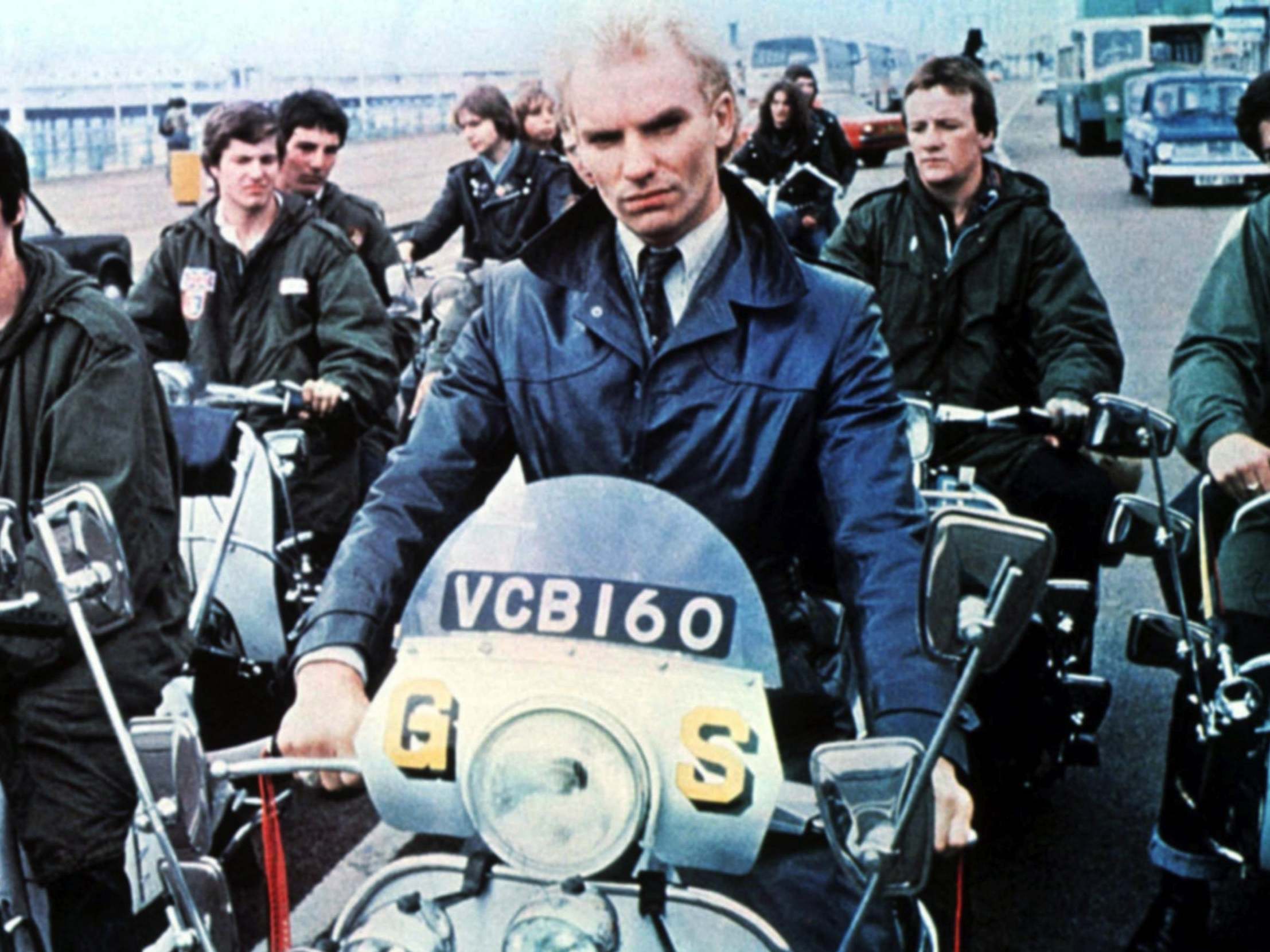How Quadrophenia immortalises and scrutinises mod culture
It’s an indelible part of Brighton’s history but, as Clarisse Loughrey writes, the 1979 adaptation of The Who’s rock opera is really concerned with a search for identity


Brighton residents know the sound well – the stentorian rattle of engines, as a fleet of Vespas and Lambrettas zip down the promenade. It feels odd for a moment, as if there’s been a rip in the space-time continuum and a little of the Swinging Sixties has trickled out. But it’s tradition here. On sunny weekends, mod aficionados gather in the city to fraternise, evangelise, and compare the number of mirrors on their scooters. Brighton was a favoured hang-out spot for the original mods, who’d travel down from London to the south’s seaside resorts, eager to ruffle the feathers of middle-class daytrippers.
Trouble came in the form of the rockers, their rivals. It was like the Capulets versus the Montagues – divided not by blood, but by the way someone might wear their hair. The mods (short for “modernist”) embraced continental style, with their crisply tailored suits and Italian scooters. To protect said suit while on said scooter, parkas became a staple. The girls wore miniskirts, as popularised by Mary Quant. The rockers, meanwhile, were bikers. Their “tough guy” attitude complemented their black leather jackets, Doc Marten boots, and Elvis pompadours.
There were clashes. The most infamous of these took place in Brighton over the Whitsun weekend (18-19 May) in 1964. A small group of rockers were corned on the beach. Police tried to intervene, but it quickly spiralled into chaos. And though, in hindsight, it’s clear the press blew events out of proportion, it’s become an indelible part of the city’s history – due largely to the fact it was immortalised in 1979’s Quadrophenia.
The film, a loose adaptation of The Who’s 1973 rock opera, stars Phil Daniels as Jimmy, a disgruntled London teen. At home, his parents treat his non-conformity as a curse. At his mailroom job at an advertising firm, he’s just another drone. And so he throws himself head-on into the hell-raising, dandyish, amphetamine-fuelled world of mod culture. It becomes his entire identity. When he ends up at the centre of the Brighton brawls and gets arrested, the adrenaline sends him heavenward – only for a moment, before disillusionment sets in and he starts to spiral.

Unlike 1975’s wildly successful adaptation of Tommy, this wasn’t a musical and didn’t feature the band onscreen. Drummer Keith Moon had died of an overdose while the film was still in pre-production. Instead, director Franc Roddam, in his feature debut, used The Who’s tracks as a psychedelic seasoning for his own grounded take on teen strife. He spent five weeks filming along the Sussex coast and in west London. The Brighton scenes saw 2,000 extras descend on the seafront – the situation was so chaotic, it threatened to turn into a real riot at any moment.
For his cast, he looked primarily to Anna Scher’s Islington-based acting school, known for its fostering of working-class talent. The lead, meanwhile, nearly went to Johnny Rotten of the Sex Pistols, but the insurers, unsurprisingly, refused to cover him. No matter. Daniels is a perfect choice – he makes the tailoring look snappy, but that toothy grin betrays Jimmy’s naivete. There’s a handful of now-famous faces here: Toyah Willcox, Timothy Spall, Ray Winstone, and Sting. But since they were all unknowns at the time, Roddam could afford to give the cast a month’s preparation – an opportunity to immerse themselves in mod culture, as guided by The Who’s oldest and most loyal of fans. “We met a load of geezers down in Shepherd’s Bush,” Gary Shail, who played Spider, said in 2011. “They all had half-fingers that had been mashed up in the 1960s wars with the rockers. They were giving us pills and all that s***, and we all got mashed.”
Their enthusiasm was infectious. Although the film flopped at the box office (thanks partially to its controversial X rating), it was quick to amass a cult following. The timing was oddly perfect, too, since it arrived just as the mod revival of the late Seventies, led by The Jam, was kicking off. Then came Britpop in the Nineties, with Blur and Oasis taking their own cues from the Quadrophenia phenomenon – Daniels’s semi-philosophical ramblings on “Parklife” ensured the song became a hit.
It may not be a musical, but the film’s songs are still part of its lifeblood. The album’s original title of Quadrophenia refers to the four personalities that live within Jimmy, representing the four band members. Each has their own theme and unique character, as described in the liner notes: “Helpless Dancer” (Roger Daltrey, “a tough guy, a helpless dancer”), “Is it Me?” (John Entwistle, “a romantic”), “Bell Boy” (Keith Moon, “a bloody lunatic”) and “Love, Reign o’er Me” (Townshend, “a beggar, a hypocrite”). It speaks to the core of Roddam’s film: that Jimmy’s pursuit of the mod lifestyle is really a search for identity.
Quadrophenia may be the greatest celluloid celebration of mod culture there is, but it’s laced with a deep sense of cynicism. Jimmy hits rock bottom when he discovers that his idol, the impeccably dressed Ace Face (Sting), works as a bellhop at the Grand Brighton Hotel. That, to him, is the ultimate betrayal of the mod ethos – the flashy clothes were all part of a post-war belief in upward mobility, fuelled by consumerism. And here Ace Face is, happily subservient to the upper classes.
“I mean, you gotta be somebody, ain’t ya? Or you might as well jump in the sea and drown,” Jimmy declares. As the world exposes its own hollowness, that second option becomes more and more appealing to him – but, as the final shot of a Vespa hurtling into the ocean proves, not in a literal sense. Our hero can only find freedom once he strips away every inauthentic part of himself. As it turns out, the tailored suits were a mere distraction.
Join our commenting forum
Join thought-provoking conversations, follow other Independent readers and see their replies
Comments